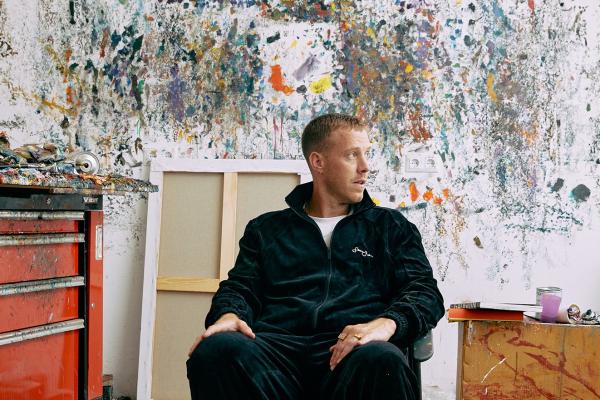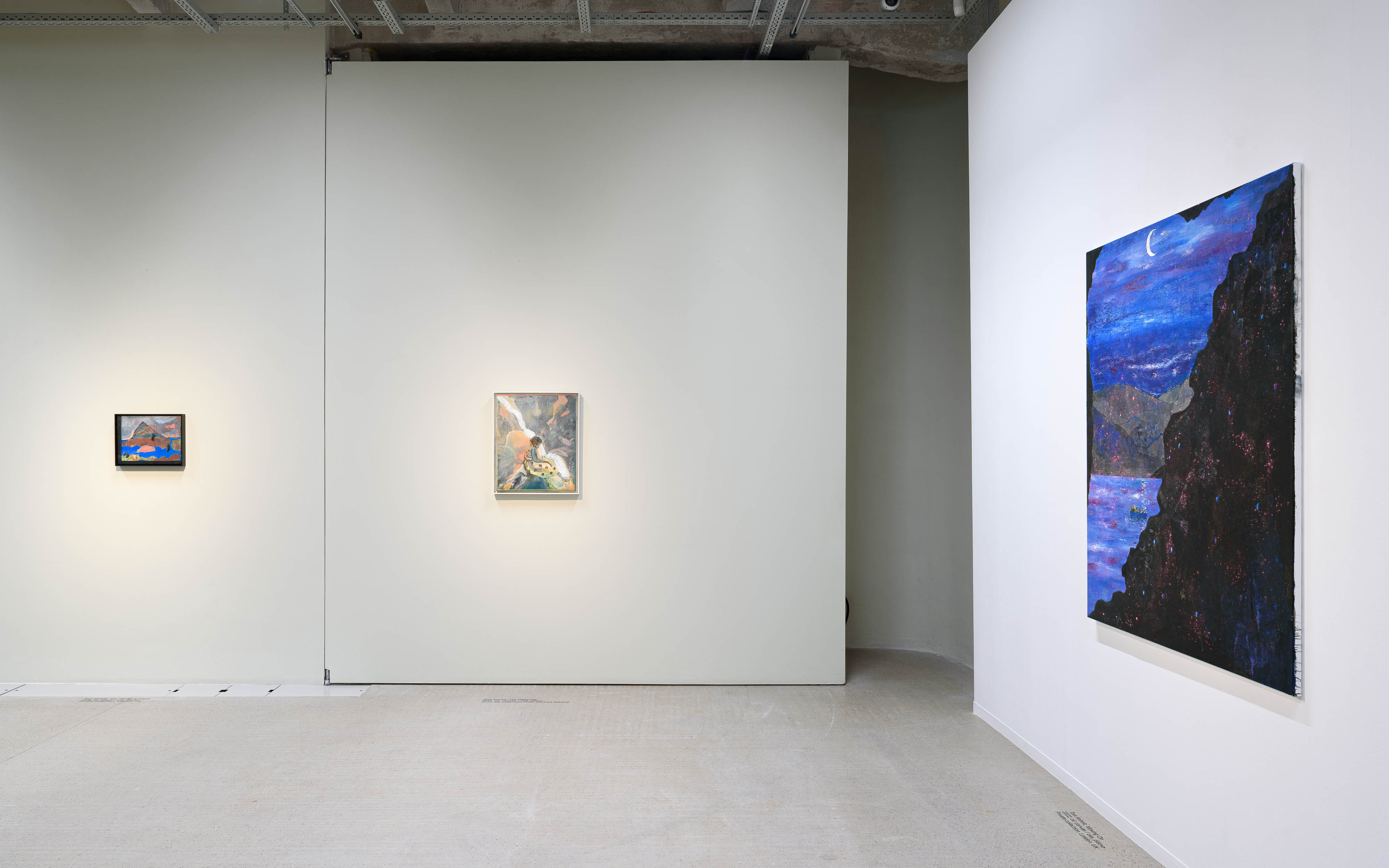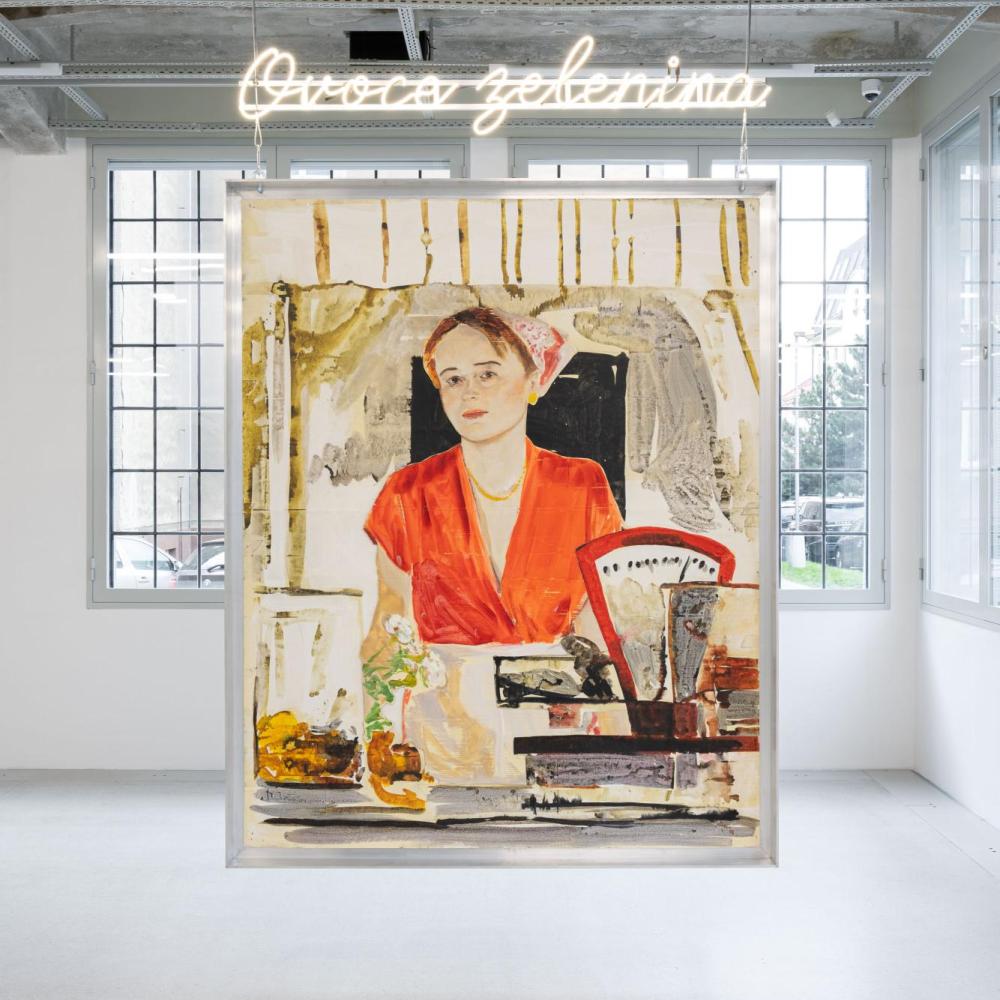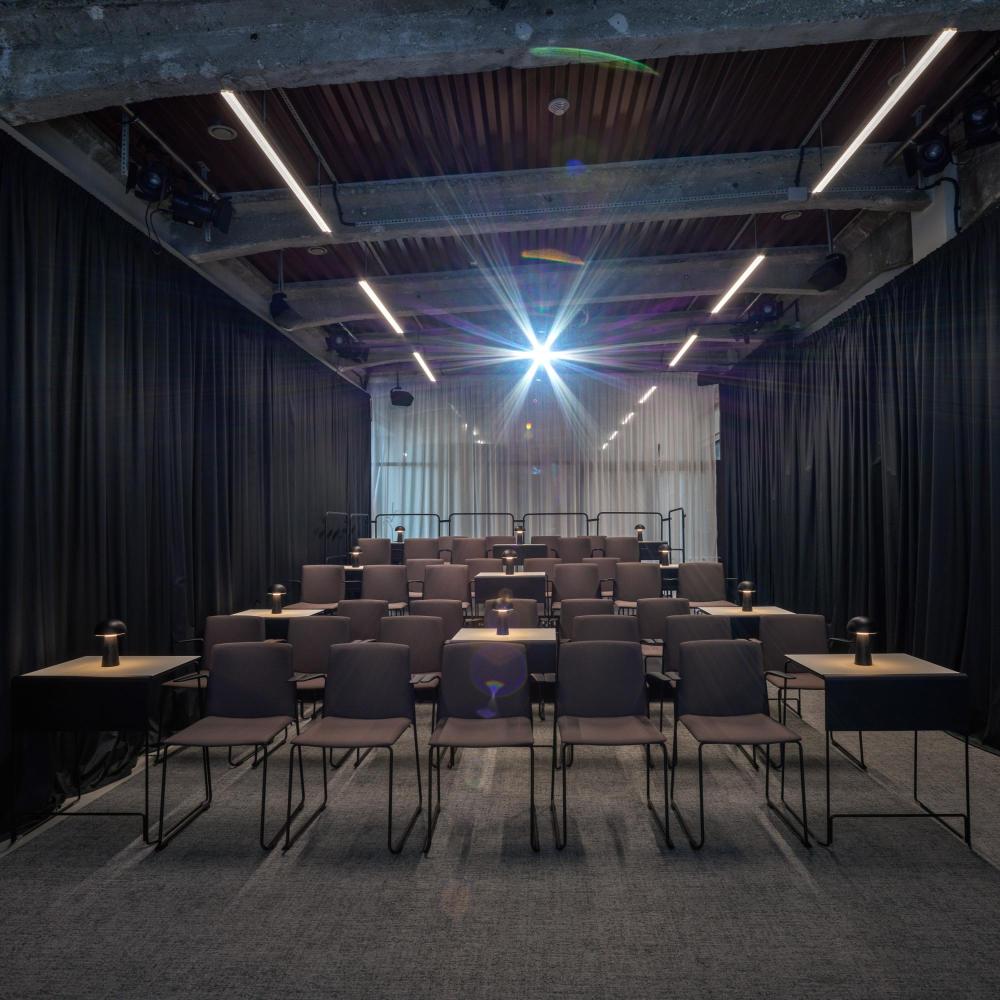
Although Tom Anholt (1987) was born in Bath, England and grew up in Dorset, he decided to move to Berlin after completing his studies at Chelsea College of Art and Design in London, where he currently lives and works. Some of Tom Anholt's exhibitions have been held in Berlin and Leipzig under the auspices of EIGEN+ART, one of the most important contemporary art galleries in Germany. Tom Anholt is currently represented by three galleries, namely the British Josh Lilley Gallery, the Danish Mikael Andersen Galerie and the South Korean Hakgojae Gallery. At first glance at the works bearing Anholt's signature, one can recognize the influence of the German milieu - some have compared Tom Anholt's painting to wild expressionism. The term we can use to cover the artist's painting is figure. Although Anholt creates without a prior plan, the human body, or fragments of it, usually find their way into the artist's works. The visuality that Tom Anholt applies to his depictions is not uniform. It ranges from the cartoonishly rendered human body, to primitivized and stylized scenes, to naively rendered and abstracted figures.
Words like “storytelling”, “journeying”, or “narrative elements” often resonate with your work. How do you reconstruct the story of your works?
The works are an amalgamation of stories I've heard, real experiences, myths, legends, fears, and desires. I trust the process of painting to purify and clarify these experiences into one concrete image for each work.
Do your works have a clear interpretation, or do you prefer to work with the idea that each viewer should understand the work based on their own experiences?
I want the works to be open enough for the viewer to be able to tell his or her own story, and for it to be emotionally stimulating in a way that draws out the viewer's own experiences.
Personally, I'm very interested in your work with perspective – you work with it a little differently in each painting. Is this a deliberate intention or intuition?
That's intuitive. I like space, especially in the larger paintings; for works to feel expansive as if the viewer could dive in. But sometimes I flatten the works a little more and focus on the composition ahead of the pictorial space.
The big question, following on from Tom Anholt's work, is formats. In the exhibition New Positions in British Painting in Olomouc, the paintings King in Exile and The Cook, radically different in terms of size, hang side by side. How do you choose the format of a painting?
Each image will dictate its own scale; if I have in mind an epic, expansive story to tell, such as the King in Exile, a large format will definitely be the best thing. More intimate moments require smaller canvases. Also, sometimes I'm just more in the mood to work on larger or smaller works, I try to not be too dogmatic.
... and what does the format mean to you? Do you also consider its effect on the viewer?
I like a show to have varied scales. It activates the viewer, bringing them in closer or out to take in a large work.
At the Telegraph Gallery, your works are in the presence of works by David Brian Smith, Justin Mortimer, or Jessie Makinson, who also work with imagery, each in their own way. How do you work with imagination?
All my works are from imagination, so not based on photographs or real places. Drawings and memories are the starting point; drawing has a magical way of bringing through experiences and places from our past.
In some of your paintings, you can see the drawing details and lines. What do you think about the relationship between drawing and painting?
Drawing and painting go hand in hand. Sometimes I will only draw for a few weeks and sometimes I will only paint, but they're never far apart.
Berlin has been your home for a long time. Would you say that German painting, which is very important for contemporary figurative painting, is an influence on you?
Yes, I've always loved German expressionism, bold mark-making, and storytelling.
In the review of your exhibition at Josh Lilley Gallery Notes on Everything, Ted Targett refers to the work of the Dutch master Jan Breughel Adam and Eve in the Garden of Eden – do you work with allusions to the “old masters” in your work?
Not directly, I go to a lot of museums and have hundreds of art books. I think of going to the studio like wearing a backpack full of 5000 years (or more!) of art history, you can constantly learn and use devices to help create your own images.
What brought you to art? Was it the “old masters”?
I grew up with it. Both my parents are wonderful painters, Laurence and Catherine Anholt.








